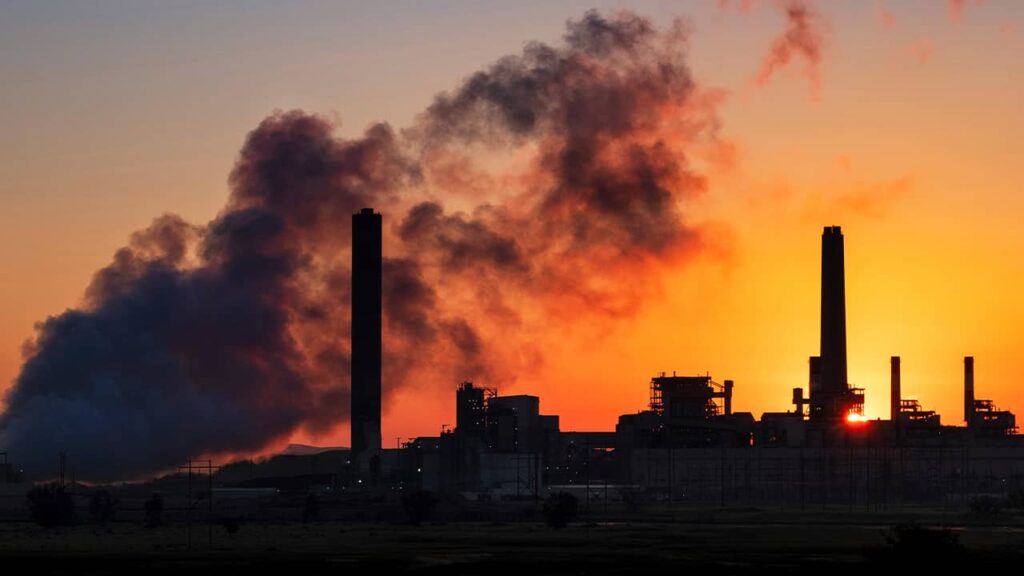Introduction to Pollution and its Impact on Health
Dorsten vs Fresno pollution comparison chart is a pressing issue that affects urban areas worldwide. It seeps into our air, water, and even the sounds we hear daily. The consequences can be dire for both health and the environment. In this blog post, we’ll delve into an intriguing comparison between two cities: Dorsten in Germany and Fresno in California.
Both cities have unique characteristics and face their own pollution challenges. Understanding how they stack up against each other can shed light on broader environmental issues at play. Are you curious about which city has cleaner air? What about water quality? Let’s dive deeper into the dorsten vs fresno pollution comparison chart to uncover the facts!
Understanding the Cities of Dorsten and Fresno
Dorsten is a charming town located in Germany’s North Rhine-Westphalia region. It offers a blend of rich history and modern amenities, making it an attractive place for both residents and visitors. The scenic parks and riverside views add to its allure.
Fresno, on the other hand, lies in California’s Central Valley. Known for agriculture and vibrant culture, it serves as a hub for diverse communities. With its sunny climate, Fresno boasts numerous outdoor activities that appeal to nature lovers.
Both cities have unique characteristics that shape their identities. While Dorsten embraces its historic roots with medieval architecture, Fresno thrives on innovation and growth amidst agricultural landscapes.
Understanding these differences provides insight into how each city approaches environmental challenges, including pollution management strategies tailored to their specific contexts.
Factors Contributing to Pollution in Dorsten and Fresno
Dorsten and Fresno face unique challenges that contribute to their pollution levels. In Dorsten, industrial activities play a significant role. Factories emit various pollutants, affecting air quality. The location near major transportation routes intensifies this issue.

Fresno’s struggle with pollution largely stems from agriculture. The Central Valley is a hub for farming, which involves pesticide use and dust from plowed fields. These practices contribute to both air and water contamination.
Urbanization further complicates the scenario in both cities. Increased vehicle emissions lead to higher carbon footprints in crowded areas. Poor infrastructure can exacerbate these problems by limiting effective waste management systems.
Weather patterns also influence pollution levels differently in each city. For example, Fresno’s temperature inversions trap pollutants close to the ground, worsening smog conditions during summer months while Dorsten experiences seasonal variations that affect local air quality trends.
Comparison of Air, Water, and Noise Pollution Levels
Air pollution in Fresno is a significant concern due to its geographic location. The city often experiences high levels of ozone and particulate matter, exacerbated by traffic and industrial activity.
Dorsten, while smaller, also faces air quality issues. Industrial emissions play a role here too, though the overall levels tend to be lower compared to Fresno.
Water pollution presents different challenges for both cities. In Fresno, agricultural runoff affects local waterways, leading to contamination from pesticides and fertilizers.
Conversely, Dorsten has seen improvements in water quality thanks to various treatment initiatives. However, it still wrestles with occasional pollution incidents linked to nearby industries.
Noise pollution varies significantly as well. Fresno’s bustling urban environment results in higher noise levels from traffic and construction work.
Dorsten offers a quieter atmosphere but may experience spikes during festivals or events that draw crowds.
Effects of Pollution on the Environment and Residents’ Health
Pollution doesn’t just impact the air we breathe; it reverberates through entire ecosystems. Contaminated waterways disrupt aquatic life, leading to a decrease in biodiversity. Fish and other species struggle to survive in polluted environments, affecting food chains.

Residents face direct health consequences too. Airborne pollutants can cause respiratory issues like asthma and chronic bronchitis. Long-term exposure increases risks for heart disease and even cancer.
Children are particularly vulnerable, as their developing bodies react more severely to toxins. Increased pollution levels correlate with higher rates of developmental disorders.
Mental health is also affected; living in polluted areas often correlates with increased stress and anxiety levels among residents. The combination of physical ailments and mental strain creates a heavy burden on communities trying to thrive amidst environmental challenges.
Government Initiatives to Tackle Pollution in Dorsten and Fresno
Government initiatives play a crucial role in combating pollution in both Dorsten and Fresno. In Dorsten, local authorities have implemented strict emission regulations for industries. These policies according to dorsten vs fresno pollution comparison chart aim to minimize air pollutants that affect the community’s health.
Fresno has taken significant steps as well. The city launched programs focused on reducing vehicle emissions. Encouraging public transport use and promoting electric vehicles are key components of their strategy.
Both cities recognize the importance of green spaces. Dorsten has invested in parks and tree planting initiatives to enhance air quality while providing residents with recreational areas. Meanwhile, Fresno is working on urban greening projects to create more shaded environments, which can also help mitigate heat-related pollution effects.
Public awareness campaigns further complement these efforts in both cities by educating residents about sustainable practices. Engaging communities fosters a shared responsibility toward environmental protection.
Tips for Reducing Personal Contribution to Pollution
Reducing personal contributions to pollution starts with small, everyday choices. Opt for public transport, biking, or walking whenever possible. This not only cuts down on emissions but also promotes a healthier lifestyle.
Mind your energy use at home. Switch off lights when you leave a room and unplug electronics that aren’t in use. Energy-efficient appliances can make a big difference too.

Embrace recycling and composting. These practices reduce waste sent to landfills and lower greenhouse gas emissions significantly.
Choose products with minimal packaging. Support brands committed to sustainability by purchasing eco-friendly items.
Get involved in local clean-up efforts or advocacy groups focused on environmental protection. Engaging with your community amplifies awareness about pollution issues while inspiring others to take action as well.
Conclusion of dorsten vs fresno pollution comparison chart
Pollution is a pressing concern that affects cities worldwide, impacting health, the environment, and overall quality of life. The dorsten vs fresno pollution comparison chart offers valuable insights into how different regions confront these challenges.
Both cities face unique pollution issues driven by various factors. Understanding these differences helps residents become more aware of their local environments and encourages proactive measures to combat pollution.
The dorsten vs fresno pollution comparison chart highlights air, water, and noise pollution levels in Dorsten versus Fresno. Each city’s distinct industrial activities, traffic patterns, and geographic features contribute to varying pollution experiences for its inhabitants.
Health impacts are significant in both areas; respiratory diseases linked to poor air quality show up frequently in studies conducted on urban populations. By examining how each city addresses these health risks through government initiatives, we can learn what works best for minimizing exposure to pollutants.
Residents play an essential role as well. Implementing small changes in daily routines can collectively lead to substantial reductions in personal contributions to pollution levels.
Understanding the nuances between Dorsten’s and Fresno’s approaches opens pathways toward cleaner futures. It empowers communities with knowledge while highlighting the need for ongoing efforts against environmental degradation affecting us all.




